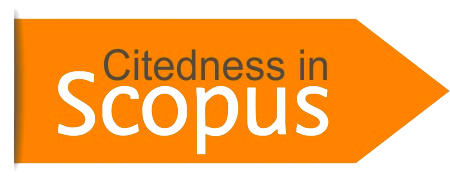Author Guidelines
Notes for Prospective Authors
- The manuscript must be written in standard academic English.
- The manuscript should consist of the following sections:
- Title: Concise and accurately reflecting the core content of the manuscript, including the research method and novelty;
- Author’s Name (maximum five): The International Journal of Islamic Education, Research, and Multiculturalism (IJIERM) does not allow any changes to author names or order after submission;
- Affiliation: Name of the institution and official email address;
- Abstract: abstract is a concise and concise statement that describes the problem, objectives, methodology and research results. Abstracts are written in two languages: Indonesian and English.
- Keywords: Five to six words that reflect the main findings and conclusions of the study;
- Introduction: Should include the background of social phenomena, a review of relevant and up-to-date scientific studies (state of the art), research objectives, and research arguments or hypotheses;
- Literature Review: Should present a general mapping of the literature related to the relationship among variables, elaboration on research types or patterns, evaluation of previous research gaps (novelty), and formulation of new research directions;
- Method: Should describe research procedures, unit of analysis, research design, data/information sources, particularly data collection and analysis methods;
- Results and Discussion: Should coherently present the main and supporting data results, including interpretation, restatement, description, explanation, comparison, reflection, analysis, and implications of the findings;
- Conclusion: Should address the research hypotheses and questions. This section must include the key findings, research strengths, and research limitations;
- Acknowledgment: Optional, to be included from the first submission and should not exceed 200 words;
- Bibliography: Should be managed using Mendeley Reference Management Software in accordance with the American Psychological Association (APA) (full note format). The reference list must include more than 30 recent sources (published within the last 10 years) representing state-of-the-art studies relevant to the research topic. Articles from reputable academic journals are highly appreciated.
- The manuscript may be based on either theoretical or empirical research in the fields of Islamic Studies, Socio-Cultural Studies, Policy and Political Studies, Communication Studies, or Legal Studies. The International Journal of Islamic Education, Research, and Multiculturalism (IJIERM) particularly welcomes critical studies that address socio-cultural dynamics, policy and political issues, communication and law, contemporary developments, and future trends in the context of multiculturalism.
- The manuscript must be original and free from plagiarism, and it must be checked beforehand using plagiarism detection software such as Turnitin or equivalent. The International Journal of Islamic Education, Research, and Multiculturalism (IJIERM) only accepts manuscripts with a similarity index not exceeding 25%. A Statement Form And Author’s Agreement must be attached during submission.
- The manuscript length should be approximately 6500–7000 words, although shorter or longer manuscripts may still be considered.
- The manuscript must be prepared in Microsoft Word format (.docx/.rtf), single-spaced, and conform to the writing style of the International Journal of Islamic Education, Research, and Multiculturalism (IJIERM). Before submission through the Online Journal System (OJS), please ensure that the official journal template is used.
- Multi-authored manuscripts resulting from collaborative research (particularly international collaborations) are highly encouraged, although single-authored manuscripts are also acceptable.
- All submitted manuscripts will undergo a peer-review process conducted by qualified academic experts in the relevant field.
- All revised manuscripts must follow the Journal’s Peer Review Checklist.



































